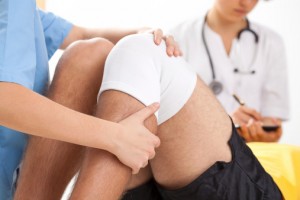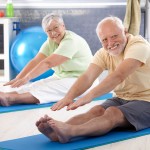

 Knee buckling, which is a sudden “giving way” of the knee as you bear weight on your leg, tends to be higher in those seeking therapy for arthritis conditions or people who suffer from unstable kneecap. While annoying and uncomfortable, once the cause of your knee buckling is determined, there are effective treatment options you can turn to.
Knee buckling, which is a sudden “giving way” of the knee as you bear weight on your leg, tends to be higher in those seeking therapy for arthritis conditions or people who suffer from unstable kneecap. While annoying and uncomfortable, once the cause of your knee buckling is determined, there are effective treatment options you can turn to.
Buckled knees normally happen in persons with knee pain, but even if initially there is no pain it should be taken seriously. Clinical research indicates that knee buckling may cause falls and fractures and could help explain the risk of hip fracture in people who suffer from osteoarthritis.
One U.S study, which looked at over 2000 people with osteoarthritis, found that about 12 percent experienced at least one knee buckling incident in the past three months. Out of these people, 13 percent actually fell when the buckling occurred. It also turned out that knee pain, muscle weakness, as well as poor physical function were related to the buckling.
While some people do end up needing surgery to address knee buckling, many people get relief by changing their fitness and diet routine. Using hot and cold compresses and a cane to minimize the damage until you get into a good therapy mode is often the best approach.
There are different reasons for a buckled knee. If you are involved in sports that cause high impact on the legs, experience an injury or repeated sprain, it can damage or tear ligaments or the meniscus, ultimately leading to an unstable knee joint. The meniscus is a combination of fibrous tissue and cartilage that divides a joint cavity. Damage to the meniscus is common among athletes. An ACL tear is even more common and has been identified as causing knee buckling. ACL stands for anterior cruciate ligament.
Any trauma or degeneration that leads to bony fragments or broken spurs floating to the knee joint can lead to that buckling feeling. There are cases where calcium can build up in the knee, too. This is called chondrocalcinosis.
Some types of arthritis, especially osteoarthritis, which can be due to wear and tear of the knee joint or an injured joint, can cause a lot of instability in the knee and, thus, buckling.
Many orthopedic specialists suggest knee buckling is a protective response by the knee and its surrounding tissues to help prevent further damage to the area.
 To treat or prevent knee buckling, you can do specific exercises. Strengthening the knee muscles and ligaments can improve the stability of joints. When we are referring to knee buckling, it is the muscles in the thigh, back of thigh, buttocks, and calf that should be worked on.
To treat or prevent knee buckling, you can do specific exercises. Strengthening the knee muscles and ligaments can improve the stability of joints. When we are referring to knee buckling, it is the muscles in the thigh, back of thigh, buttocks, and calf that should be worked on.
Here is a list of knee strengthening exercises:
You should avoid overexerting your knees and stick to low impact exercises. If your doctor suggests a support such as a cane or knee brace, then take their advice. Along with exercises, orthopedic specialists recommend that you maintain a healthy weight and a well-balanced diet.
Treatment for knee buckling depends on the severity of the injury to the knee. Many people are prescribed pain medications or pain-relieving creams. Those who suffer from arthritis may receive injections of steroids or hyaluronan. Lifestyle changes are also a big part of treatment. For example, people who are overweight are at a higher risk of knee buckling so losing weight and taking joint supplements can help improve knee problems. Since joints do deteriorate, as we get older, supplements such as vitamin C and D are regularly recommended to the elderly. Glucosamine, an amino sugar that comes from the exoskeletons of crustaceans, has also been known to help with joint pain and is prescribed by healthcare professionals.
There are some situations where surgery is necessary. If you lose fragments of bone or tissue in the knee resulting in joint problems, you may require an operation. During the procedure, fragments can be removed and damage to ligaments and other tissue can be repaired. This can be done through arthroscopic surgery, which is a procedure that involves two small incisions being made on either side of the kneecap and the use miniature cameras and tools to access the problem area. There are also more invasive techniques, including partial or total knee replacement. This is only necessary when damage to the knee is extensive.
Sometimes, when people experience knee buckling, they retreat. They start avoiding activities, going for walks less often, and engaging in social outings less frequently. Essentially, they put a stop to any kind of physical exercise because they are afraid of putting their knee at risk. The truth is, lack of exercise can do more damage. It can lead to muscle deterioration and overall health decline.
If you have experienced knee buckling, it’s important to see a doctor to determine the cause and find out what exercises are best to help you maintain a productive, healthy, happy life.
Bursitis, common cause of painful hips, knees, and elbows managed with nonsurgical treatments
Bursitis is a common cause of painful hips, knees, and elbows, but it can be managed with nonsurgical treatments. Bursitis occurs when the bursa – a small, fluid-filled sac that acts as a cushion and lubricator for our bones, muscles, and tends around our joints – becomes irritated or infected, causing pain through movement. If bursitis is caused by an infection, then medical treatment is required to combat it. But if no infection is found, then medical attention can help prevent the condition from worsening. Continue reading…
Knee buckling treatment reduces falls in older adults
Knee buckling treatment have been found to help reduce falls in older adults. Aside from easing up the injury, the treatment has been proven to alleviate the psychological effects that may accompany the fall experience. Treating knee instability is a priority, as the population continues to age and injuries caused by instable knees can negatively impact a person’s quality of life. Continue reading…
Copyright © www.orthopaedics.win Bone Health All Rights Reserved